Polar Bears and the Wildlife
of Svalbard
June 2017 Photo Tour/Safari
An exclusive shoot limited to
only ten participants
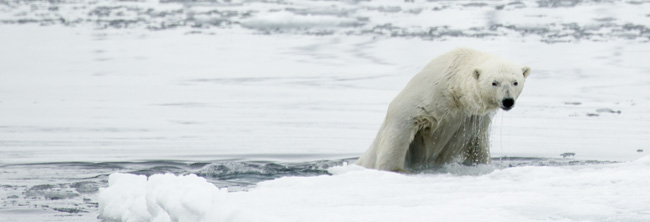
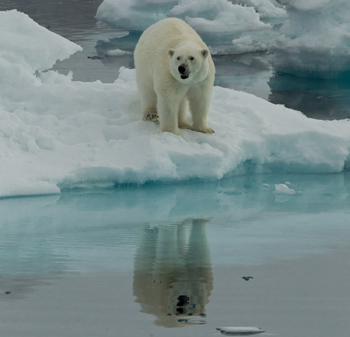
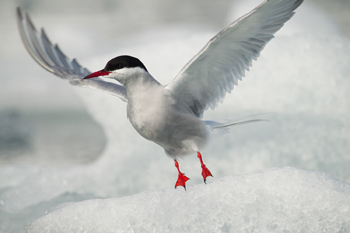
Attention!
In 2015 we worried that small boat trips to the high arctic might be stopped. At this time, and in the foreseeable future they have not been, but you never know! At any rate, our trip uses a wonderful ship -- the envy of artic tour leaders -- that allows us passage in areas where larger boats cannot go. This special 10 day trip will maximize our time in the ice, for polar bears and for walruses, and other wildlife.
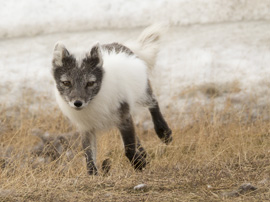
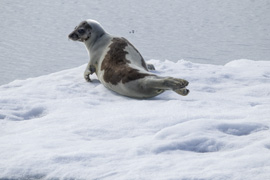
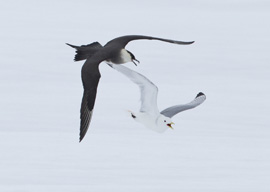
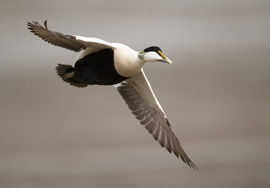
Arctic Fox, Harp Seal
Parasitic Jaegar and Kittiwake, Common Eider
June , 2017 Price: $TBA
Single Supplement, Longyearbyen only: $112

Svalbard, Norway, is widely known as the new Polar Bear Capital of the World, where bears can be seen hunting or roaming the pack ice, snow fields, or shorelines of this ruggedly beautiful island landscape. In addition to Polar Bears, our tour is timed to maximize our opportunities for all of the wildlife found this far north, from Walruses and Bearded Seals to Arctic Terns and Eiders.

King Eider photo composite
Our ship is one of the most sought-after in the islands, the M-S Stockholm,a beautiful vessel that is ideally suited for photography.
With only twelve photographers, ten participants and Mary and I, there is plenty of room on deck for photography. The vessel's primary attraction is the low decks, allowing the lowest possible shooting angle for photography of any vessel, other than that done from a zodiac.
Our Itinerary
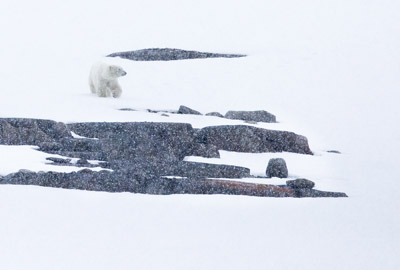 Our Tour begins when the group arrives in Longyearbyen on the island of Svalbard, far above the Arctic Circle. We've rented two SUV vehicles for our first days in Svalbard, where we'll go, in the afternoon, to photograph the nesting Common Eiders, Barnacle Geese, and possibly Arctic Fox and Jaegers, and we'll look for and hopefully photograph the incredibly well-camouflaged Rock Ptarmigans and the unique wild Reindeer that roam the tundra.
Our Tour begins when the group arrives in Longyearbyen on the island of Svalbard, far above the Arctic Circle. We've rented two SUV vehicles for our first days in Svalbard, where we'll go, in the afternoon, to photograph the nesting Common Eiders, Barnacle Geese, and possibly Arctic Fox and Jaegers, and we'll look for and hopefully photograph the incredibly well-camouflaged Rock Ptarmigans and the unique wild Reindeer that roam the tundra.
We'll have two chances at photographing these subjects, on the afternoon of our first day and the morning of our second, before we board the Stockholm for our journey north towards the ice and polar bears. Few if any other tour offers these opportunities for land-based photography of these species.
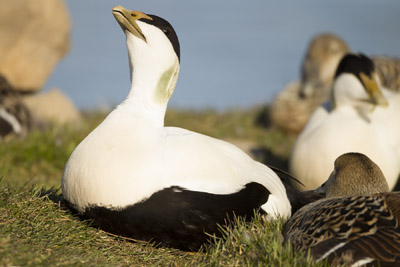

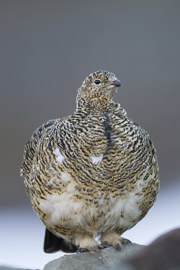
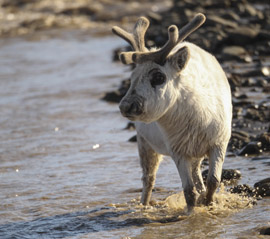
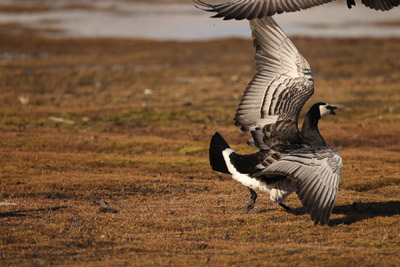
For the next six full days we'll be traveling along the northwestern, northern, and eastern coasts of Svalbard, exploring the fjords, bays, and surrounding ice for polar bears, seals, walruses, and birds.
Exactly where we go will be determined by the ice, especially the pack ice which, a year in advance, can simply not be predicted. If the ice behaves 'normally,' we'll be photographing at the impressive Fourth of July Glacier, the incredible Common Murre nesting colony at the Henlopen Straits, and the pack ice somewhere at sea.
For a far more complete idea of a 'typical tour,' if there is such a tour in this land, please read either our 2015 or our 2013 trip report aboard the Stockholm or our 2012 scouting report where we were aboard a larger ship, with over fifty passengers and where we were only participants scouting out the locations.
That experience convinced us that
we would only lead our own Svalbard trips on a smaller boat like the incredible Stockholm.
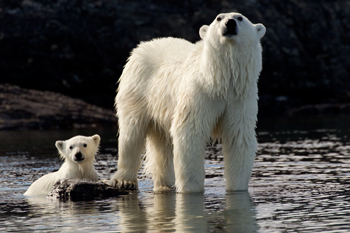
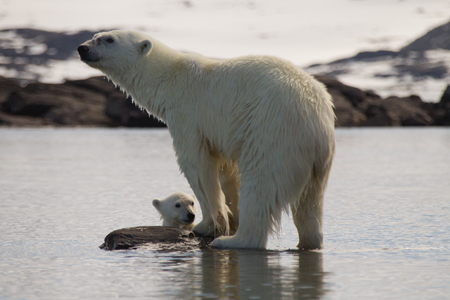
In Brief, our itinerary will be:
Day 1, Arrive in Longyearbyen and do a PM land excursion via SUVs for Common Eiders at the nesting colony, Barnacle Geese, Rock Ptarmigan, Reindeer, landscapes, etc.

Arctic Fox photo composite

Day 2, AM land excursion to the Common Eider nesting colony, and the other subjects listed above. After lunch we'll visit the Museum which highlights the natural and cultural history of Longyearbyen and the Arctic.
PM. We'll be heading out to sea in the mid-afternoon, beginning our journey north.
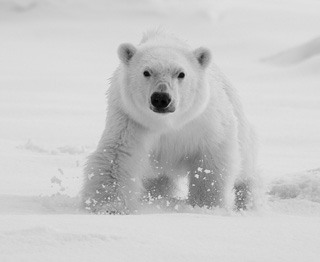

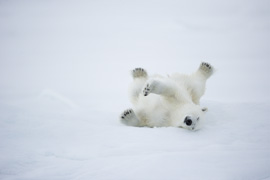
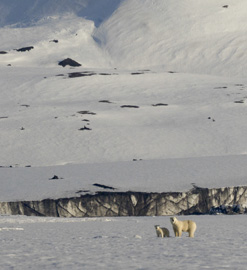
Day 3-9. We'll be at sea, where we'll either photograph from zodiacs or
another boat, or both, depending upon the conditions. Weather and ice permitting, we'll be traveling into bays and fjords and straits, looking for and hopefully photographing Atlantic Walruses, Bearded Seals, Harbor Seals, Polar Bears, various birds, and incredible landscapes.
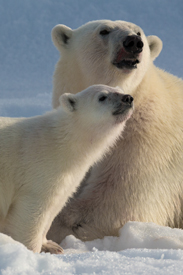
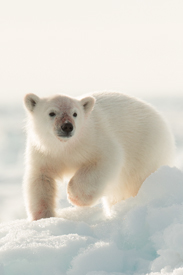
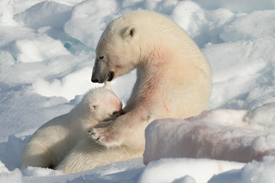
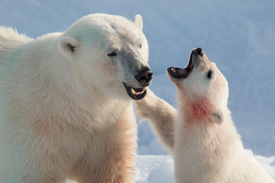
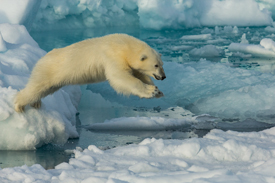
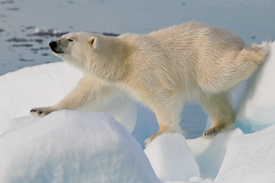
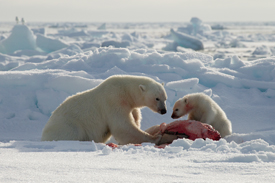
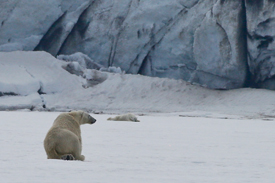
Day 10. We'll be returning to Longyearbyen and departing in the afternoon to Oslo.
Again, a review of our 2013 or 2015 trip reports will give you a great idea of this trip, and will also explain why we must use the qualifier 'weather and ice permitting' because we are in the extreme far north, the land of ice and polar bears.
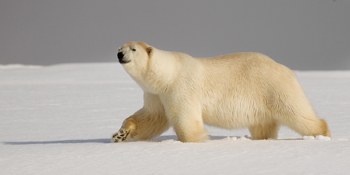
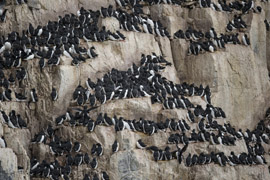
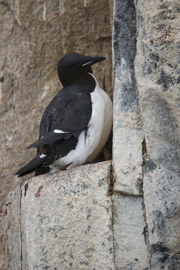
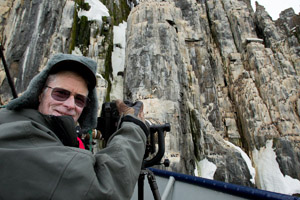
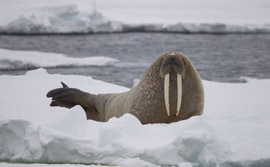
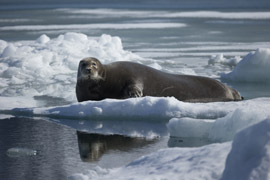
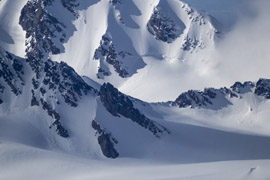
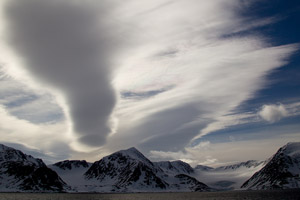
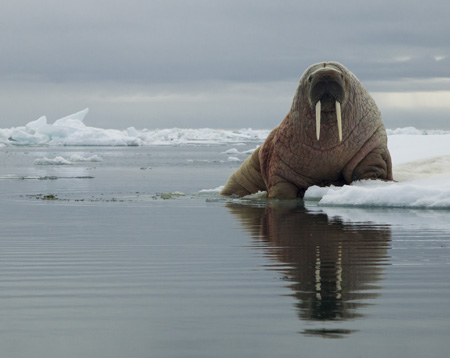
Highlights
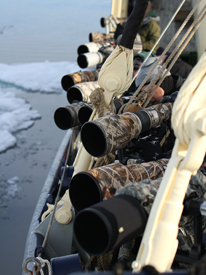 We are using what may be the most sought-after photography vessel in Svalbard, the Stockholm. With only ten photographers and Mary and I, we'll have plenty of space for shooting, and plenty of time for personal attention to your photography needs. Our trip is designed for photography, and between our unique land excursions in Longyearbyen and our cruising, via the ship or by small boats, we'll maximize every opportunity we have.
We are using what may be the most sought-after photography vessel in Svalbard, the Stockholm. With only ten photographers and Mary and I, we'll have plenty of space for shooting, and plenty of time for personal attention to your photography needs. Our trip is designed for photography, and between our unique land excursions in Longyearbyen and our cruising, via the ship or by small boats, we'll maximize every opportunity we have.
The image here shows all of us as we're photographing a mother bear and her cub. Everyone has a great position, and there is no struggling to squeeze in or to shoot over another photographer. Additionally, we're only a few yards above the level of the ice -- so low, in fact, that a bear could look into a porthole! We've even photographed at ice-level from open portholes, as well as from our zodiacs when that was the best option for photographing walruses or bears. In short, the photographic possibilities are incredible.
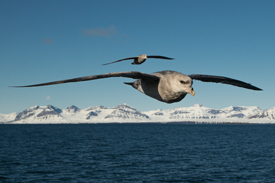
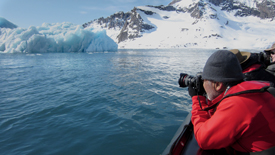
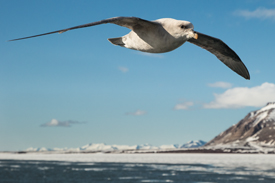
Northern Fulmars cruising by our boat, so close that a 70-200mm was usually too big a lens.
Most shooting was with much shorter lenses, which allowed us to include
the landscape as well as frame-filling birds in our shots!
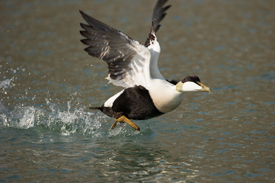
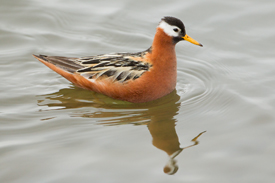
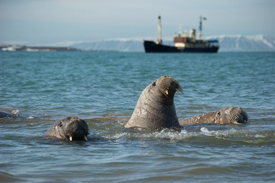
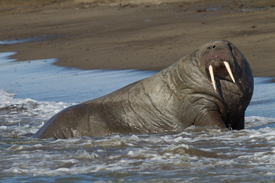

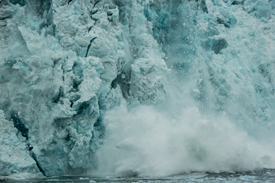
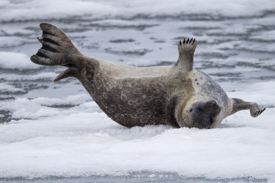
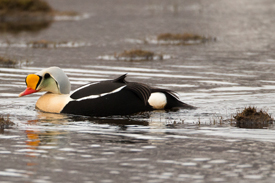
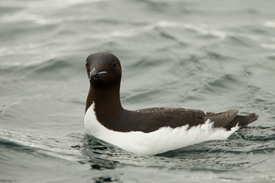
Our Roles as Leaders, and Your Role
Mary and I know wildlife -- we are biologists by training, and professional field naturalists by trade. We know our wildlife and how to photograph it, but most importantly, we want everyone on our tours to obtain great photographs while enjoying themselves while doing so. Great wildlife and nature photography requires patience and time, and some luck, and also some degree of skill and skill sets that we can provide. You can trust us that everything, everything, we do as your trip leaders will have these priorities in mind -- your photos and your well-being, both as an individual and a member of our group.
About Your Leaders
Both Mary and I are photographers, and I'd hope you've seen our credits. These include Audubon, National Geographic, National Wildlife, Ranger Rick, Natural History, Living Bird, Birder's World, Wildlife Conservation, and most nature/wildlife calendars.
We've won numerous times in the prestigious BBC Wildlife Photographer of the Year competition, 15 places in all. In 2013 Joe had a first place in Mammal Behavior, and a few years earlier came in second, behind the disqualified first place winner in Animal Portraits. In 1994 Mary Ann won two first place awards in the prestigious BBC Wildlife Photographer of the Year competition, in Endangered Species and in Bird Behavior. In 1998 she had three highly commended images published in the BBC competition, ALL THREE from Kenya! She won first place in the Cemex/Nature's Best photo contest in the Humor Division for Professional Photographers. In 2003 she won first place in Mammal Behavior in the Agfa All Africa photo competition with a dust bathing bull elephant from Samburu. Mary has written a number of children's books, including Leopards, Grizzly Bears, Woodpeckers, Flying Squirrels, Sunflowers, Cobras, Jupiter, Boas, Garter Snakes, Pythons, Rattlesnakes, Ducks, Chickens, Horses, and Cows, and a coffee table book, Out of the Past: Amish Tradition and Faith.
I've written several how-to wildlife photography books -- A Practical Guide to Photographing American Wildlife, The Wildlife Photographer's Field Manual, The Complete Guide to Wildlife Photography, Designing Wildlife Photographs, Photographing on Safari, A Field Guide to Photographing in East Africa, and The New Complete Guide to Wildlife Photography. In 1999 Todtri published African Wildlife, and in 1999 we produced our first instructional video, A Video Guide to Photographing on Safari with Joe and Mary Ann McDonald. The video has received rave reviews, and it is the definitive guide for preparing yourself for a safari. I've won several times for highly commended images in both the Cemex/Nature's Best and the Agfa all Africa photo competitions. In 2003 I won 2nd place in the World in Our Hands category in the BBC competition with an image from Africa. In 2013 I won 1st place in Mammal Behavior.
Mary and I were featured in the book, the World's Best Wildlife Photographers, and we write regularly. Previously, Joe wrote columns in Outdoor Photographer magazine and presently writes a regular feature for Nature Photographer magazine, and in several web magazines. One of our books, Digital Nature Photography, From Capture to Output, is a PDF file that covers EVERYTHING you need to know about digital nature photography, including workflow, file management, RAW conversion, and maximizing the digital image. It is available directly through our office.
Joe's two latest books, Creatures of the Night, and Deadly Creatures, deal with the natural history of nocturnal animals and with wildlife that is potentially dangerous to man.
Contact us by e-mail. at: info@hoothollow.com
Or Call (717) 543-6423 or FAX us at: (717) 543-6423
Polar Bears and the Wildlife
of Svalbard
June 2017 Photo Tour/Safari
An exclusive shoot limited to
only ten participants



Attention!
In 2015 we worried that small boat trips to the high arctic might be stopped. At this time, and in the foreseeable future they have not been, but you never know! At any rate, our trip uses a wonderful ship -- the envy of artic tour leaders -- that allows us passage in areas where larger boats cannot go. This special 10 day trip will maximize our time in the ice, for polar bears and for walruses, and other wildlife.




Arctic Fox, Harp Seal
Parasitic Jaegar and Kittiwake, Common Eider
June , 2017 Price: $TBA
Single Supplement, Longyearbyen only: $112

Svalbard, Norway, is widely known as the new Polar Bear Capital of the World, where bears can be seen hunting or roaming the pack ice, snow fields, or shorelines of this ruggedly beautiful island landscape. In addition to Polar Bears, our tour is timed to maximize our opportunities for all of the wildlife found this far north, from Walruses and Bearded Seals to Arctic Terns and Eiders.

King Eider photo composite
Our ship is one of the most sought-after in the islands, the M-S Stockholm,a beautiful vessel that is ideally suited for photography.
With only twelve photographers, ten participants and Mary and I, there is plenty of room on deck for photography. The vessel's primary attraction is the low decks, allowing the lowest possible shooting angle for photography of any vessel, other than that done from a zodiac.
Our Itinerary
 Our Tour begins when the group arrives in Longyearbyen on the island of Svalbard, far above the Arctic Circle. We've rented two SUV vehicles for our first days in Svalbard, where we'll go, in the afternoon, to photograph the nesting Common Eiders, Barnacle Geese, and possibly Arctic Fox and Jaegers, and we'll look for and hopefully photograph the incredibly well-camouflaged Rock Ptarmigans and the unique wild Reindeer that roam the tundra.
Our Tour begins when the group arrives in Longyearbyen on the island of Svalbard, far above the Arctic Circle. We've rented two SUV vehicles for our first days in Svalbard, where we'll go, in the afternoon, to photograph the nesting Common Eiders, Barnacle Geese, and possibly Arctic Fox and Jaegers, and we'll look for and hopefully photograph the incredibly well-camouflaged Rock Ptarmigans and the unique wild Reindeer that roam the tundra.
We'll have two chances at photographing these subjects, on the afternoon of our first day and the morning of our second, before we board the Stockholm for our journey north towards the ice and polar bears. Few if any other tour offers these opportunities for land-based photography of these species.





For the next six full days we'll be traveling along the northwestern, northern, and eastern coasts of Svalbard, exploring the fjords, bays, and surrounding ice for polar bears, seals, walruses, and birds.
Exactly where we go will be determined by the ice, especially the pack ice which, a year in advance, can simply not be predicted. If the ice behaves 'normally,' we'll be photographing at the impressive Fourth of July Glacier, the incredible Common Murre nesting colony at the Henlopen Straits, and the pack ice somewhere at sea.
For a far more complete idea of a 'typical tour,' if there is such a tour in this land, please read either our 2015 or our 2013 trip report aboard the Stockholm or our 2012 scouting report where we were aboard a larger ship, with over fifty passengers and where we were only participants scouting out the locations.
That experience convinced us that
we would only lead our own Svalbard trips on a smaller boat like the incredible Stockholm.


In Brief, our itinerary will be:
Day 1, Arrive in Longyearbyen and do a PM land excursion via SUVs for Common Eiders at the nesting colony, Barnacle Geese, Rock Ptarmigan, Reindeer, landscapes, etc.

Arctic Fox photo composite

Day 2, AM land excursion to the Common Eider nesting colony, and the other subjects listed above. After lunch we'll visit the Museum which highlights the natural and cultural history of Longyearbyen and the Arctic.
PM. We'll be heading out to sea in the mid-afternoon, beginning our journey north.




Day 3-9. We'll be at sea, where we'll either photograph from zodiacs or
another boat, or both, depending upon the conditions. Weather and ice permitting, we'll be traveling into bays and fjords and straits, looking for and hopefully photographing Atlantic Walruses, Bearded Seals, Harbor Seals, Polar Bears, various birds, and incredible landscapes.








Day 10. We'll be returning to Longyearbyen and departing in the afternoon to Oslo.
Again, a review of our 2013 or 2015 trip reports will give you a great idea of this trip, and will also explain why we must use the qualifier 'weather and ice permitting' because we are in the extreme far north, the land of ice and polar bears.









Highlights
 We are using what may be the most sought-after photography vessel in Svalbard, the Stockholm. With only ten photographers and Mary and I, we'll have plenty of space for shooting, and plenty of time for personal attention to your photography needs. Our trip is designed for photography, and between our unique land excursions in Longyearbyen and our cruising, via the ship or by small boats, we'll maximize every opportunity we have.
We are using what may be the most sought-after photography vessel in Svalbard, the Stockholm. With only ten photographers and Mary and I, we'll have plenty of space for shooting, and plenty of time for personal attention to your photography needs. Our trip is designed for photography, and between our unique land excursions in Longyearbyen and our cruising, via the ship or by small boats, we'll maximize every opportunity we have.
The image here shows all of us as we're photographing a mother bear and her cub. Everyone has a great position, and there is no struggling to squeeze in or to shoot over another photographer. Additionally, we're only a few yards above the level of the ice -- so low, in fact, that a bear could look into a porthole! We've even photographed at ice-level from open portholes, as well as from our zodiacs when that was the best option for photographing walruses or bears. In short, the photographic possibilities are incredible.



Northern Fulmars cruising by our boat, so close that a 70-200mm was usually too big a lens.
Most shooting was with much shorter lenses, which allowed us to include
the landscape as well as frame-filling birds in our shots!









Our Roles as Leaders, and Your Role
Mary and I know wildlife -- we are biologists by training, and professional field naturalists by trade. We know our wildlife and how to photograph it, but most importantly, we want everyone on our tours to obtain great photographs while enjoying themselves while doing so. Great wildlife and nature photography requires patience and time, and some luck, and also some degree of skill and skill sets that we can provide. You can trust us that everything, everything, we do as your trip leaders will have these priorities in mind -- your photos and your well-being, both as an individual and a member of our group.
About Your Leaders
Both Mary and I are photographers, and I'd hope you've seen our credits. These include Audubon, National Geographic, National Wildlife, Ranger Rick, Natural History, Living Bird, Birder's World, Wildlife Conservation, and most nature/wildlife calendars.
We've won numerous times in the prestigious BBC Wildlife Photographer of the Year competition, 15 places in all. In 2013 Joe had a first place in Mammal Behavior, and a few years earlier came in second, behind the disqualified first place winner in Animal Portraits. In 1994 Mary Ann won two first place awards in the prestigious BBC Wildlife Photographer of the Year competition, in Endangered Species and in Bird Behavior. In 1998 she had three highly commended images published in the BBC competition, ALL THREE from Kenya! She won first place in the Cemex/Nature's Best photo contest in the Humor Division for Professional Photographers. In 2003 she won first place in Mammal Behavior in the Agfa All Africa photo competition with a dust bathing bull elephant from Samburu. Mary has written a number of children's books, including Leopards, Grizzly Bears, Woodpeckers, Flying Squirrels, Sunflowers, Cobras, Jupiter, Boas, Garter Snakes, Pythons, Rattlesnakes, Ducks, Chickens, Horses, and Cows, and a coffee table book, Out of the Past: Amish Tradition and Faith.
I've written several how-to wildlife photography books -- A Practical Guide to Photographing American Wildlife, The Wildlife Photographer's Field Manual, The Complete Guide to Wildlife Photography, Designing Wildlife Photographs, Photographing on Safari, A Field Guide to Photographing in East Africa, and The New Complete Guide to Wildlife Photography. In 1999 Todtri published African Wildlife, and in 1999 we produced our first instructional video, A Video Guide to Photographing on Safari with Joe and Mary Ann McDonald. The video has received rave reviews, and it is the definitive guide for preparing yourself for a safari. I've won several times for highly commended images in both the Cemex/Nature's Best and the Agfa all Africa photo competitions. In 2003 I won 2nd place in the World in Our Hands category in the BBC competition with an image from Africa. In 2013 I won 1st place in Mammal Behavior.
Mary and I were featured in the book, the World's Best Wildlife Photographers, and we write regularly. Previously, Joe wrote columns in Outdoor Photographer magazine and presently writes a regular feature for Nature Photographer magazine, and in several web magazines. One of our books, Digital Nature Photography, From Capture to Output, is a PDF file that covers EVERYTHING you need to know about digital nature photography, including workflow, file management, RAW conversion, and maximizing the digital image. It is available directly through our office.
Joe's two latest books, Creatures of the Night, and Deadly Creatures, deal with the natural history of nocturnal animals and with wildlife that is potentially dangerous to man.
Contact us by e-mail. at: info@hoothollow.com
Or Call (717) 543-6423 or FAX us at: (717) 543-6423
Polar Bears and the Wildlife
of Svalbard
of Svalbard
June 2017 Photo Tour/Safari
An exclusive shoot limited to
only ten participants

An exclusive shoot limited to
only ten participants



Attention!
In 2015 we worried that small boat trips to the high arctic might be stopped. At this time, and in the foreseeable future they have not been, but you never know! At any rate, our trip uses a wonderful ship -- the envy of artic tour leaders -- that allows us passage in areas where larger boats cannot go. This special 10 day trip will maximize our time in the ice, for polar bears and for walruses, and other wildlife.




Arctic Fox, Harp Seal
Parasitic Jaegar and Kittiwake, Common Eider
June , 2017 Price: $TBA
Single Supplement, Longyearbyen only: $112


Attention!
In 2015 we worried that small boat trips to the high arctic might be stopped. At this time, and in the foreseeable future they have not been, but you never know! At any rate, our trip uses a wonderful ship -- the envy of artic tour leaders -- that allows us passage in areas where larger boats cannot go. This special 10 day trip will maximize our time in the ice, for polar bears and for walruses, and other wildlife.




Arctic Fox, Harp Seal
Parasitic Jaegar and Kittiwake, Common Eider
June , 2017 Price: $TBA
Single Supplement, Longyearbyen only: $112

Svalbard, Norway, is widely known as the new Polar Bear Capital of the World, where bears can be seen hunting or roaming the pack ice, snow fields, or shorelines of this ruggedly beautiful island landscape. In addition to Polar Bears, our tour is timed to maximize our opportunities for all of the wildlife found this far north, from Walruses and Bearded Seals to Arctic Terns and Eiders.

King Eider photo composite
Our ship is one of the most sought-after in the islands, the M-S Stockholm,a beautiful vessel that is ideally suited for photography.
With only twelve photographers, ten participants and Mary and I, there is plenty of room on deck for photography. The vessel's primary attraction is the low decks, allowing the lowest possible shooting angle for photography of any vessel, other than that done from a zodiac.
 Our Tour begins when the group arrives in Longyearbyen on the island of Svalbard, far above the Arctic Circle. We've rented two SUV vehicles for our first days in Svalbard, where we'll go, in the afternoon, to photograph the nesting Common Eiders, Barnacle Geese, and possibly Arctic Fox and Jaegers, and we'll look for and hopefully photograph the incredibly well-camouflaged Rock Ptarmigans and the unique wild Reindeer that roam the tundra.
Our Tour begins when the group arrives in Longyearbyen on the island of Svalbard, far above the Arctic Circle. We've rented two SUV vehicles for our first days in Svalbard, where we'll go, in the afternoon, to photograph the nesting Common Eiders, Barnacle Geese, and possibly Arctic Fox and Jaegers, and we'll look for and hopefully photograph the incredibly well-camouflaged Rock Ptarmigans and the unique wild Reindeer that roam the tundra.
We'll have two chances at photographing these subjects, on the afternoon of our first day and the morning of our second, before we board the Stockholm for our journey north towards the ice and polar bears. Few if any other tour offers these opportunities for land-based photography of these species.





For the next six full days we'll be traveling along the northwestern, northern, and eastern coasts of Svalbard, exploring the fjords, bays, and surrounding ice for polar bears, seals, walruses, and birds.
Exactly where we go will be determined by the ice, especially the pack ice which, a year in advance, can simply not be predicted. If the ice behaves 'normally,' we'll be photographing at the impressive Fourth of July Glacier, the incredible Common Murre nesting colony at the Henlopen Straits, and the pack ice somewhere at sea.
For a far more complete idea of a 'typical tour,' if there is such a tour in this land, please read either our 2015 or our 2013 trip report aboard the Stockholm or our 2012 scouting report where we were aboard a larger ship, with over fifty passengers and where we were only participants scouting out the locations.
That experience convinced us that
we would only lead our own Svalbard trips on a smaller boat like the incredible Stockholm.


In Brief, our itinerary will be:
Day 1, Arrive in Longyearbyen and do a PM land excursion via SUVs for Common Eiders at the nesting colony, Barnacle Geese, Rock Ptarmigan, Reindeer, landscapes, etc.

Arctic Fox photo composite

Day 2, AM land excursion to the Common Eider nesting colony, and the other subjects listed above. After lunch we'll visit the Museum which highlights the natural and cultural history of Longyearbyen and the Arctic.
PM. We'll be heading out to sea in the mid-afternoon, beginning our journey north.




Day 3-9. We'll be at sea, where we'll either photograph from zodiacs or
another boat, or both, depending upon the conditions. Weather and ice permitting, we'll be traveling into bays and fjords and straits, looking for and hopefully photographing Atlantic Walruses, Bearded Seals, Harbor Seals, Polar Bears, various birds, and incredible landscapes.








Day 10. We'll be returning to Longyearbyen and departing in the afternoon to Oslo.
Again, a review of our 2013 or 2015 trip reports will give you a great idea of this trip, and will also explain why we must use the qualifier 'weather and ice permitting' because we are in the extreme far north, the land of ice and polar bears.









Highlights
 We are using what may be the most sought-after photography vessel in Svalbard, the Stockholm. With only ten photographers and Mary and I, we'll have plenty of space for shooting, and plenty of time for personal attention to your photography needs. Our trip is designed for photography, and between our unique land excursions in Longyearbyen and our cruising, via the ship or by small boats, we'll maximize every opportunity we have.
We are using what may be the most sought-after photography vessel in Svalbard, the Stockholm. With only ten photographers and Mary and I, we'll have plenty of space for shooting, and plenty of time for personal attention to your photography needs. Our trip is designed for photography, and between our unique land excursions in Longyearbyen and our cruising, via the ship or by small boats, we'll maximize every opportunity we have.
The image here shows all of us as we're photographing a mother bear and her cub. Everyone has a great position, and there is no struggling to squeeze in or to shoot over another photographer. Additionally, we're only a few yards above the level of the ice -- so low, in fact, that a bear could look into a porthole! We've even photographed at ice-level from open portholes, as well as from our zodiacs when that was the best option for photographing walruses or bears. In short, the photographic possibilities are incredible.



Northern Fulmars cruising by our boat, so close that a 70-200mm was usually too big a lens.
Most shooting was with much shorter lenses, which allowed us to include
the landscape as well as frame-filling birds in our shots!









Our Roles as Leaders, and Your Role
Mary and I know wildlife -- we are biologists by training, and professional field naturalists by trade. We know our wildlife and how to photograph it, but most importantly, we want everyone on our tours to obtain great photographs while enjoying themselves while doing so. Great wildlife and nature photography requires patience and time, and some luck, and also some degree of skill and skill sets that we can provide. You can trust us that everything, everything, we do as your trip leaders will have these priorities in mind -- your photos and your well-being, both as an individual and a member of our group.
About Your Leaders
Both Mary and I are photographers, and I'd hope you've seen our credits. These include Audubon, National Geographic, National Wildlife, Ranger Rick, Natural History, Living Bird, Birder's World, Wildlife Conservation, and most nature/wildlife calendars.
We've won numerous times in the prestigious BBC Wildlife Photographer of the Year competition, 15 places in all. In 2013 Joe had a first place in Mammal Behavior, and a few years earlier came in second, behind the disqualified first place winner in Animal Portraits. In 1994 Mary Ann won two first place awards in the prestigious BBC Wildlife Photographer of the Year competition, in Endangered Species and in Bird Behavior. In 1998 she had three highly commended images published in the BBC competition, ALL THREE from Kenya! She won first place in the Cemex/Nature's Best photo contest in the Humor Division for Professional Photographers. In 2003 she won first place in Mammal Behavior in the Agfa All Africa photo competition with a dust bathing bull elephant from Samburu. Mary has written a number of children's books, including Leopards, Grizzly Bears, Woodpeckers, Flying Squirrels, Sunflowers, Cobras, Jupiter, Boas, Garter Snakes, Pythons, Rattlesnakes, Ducks, Chickens, Horses, and Cows, and a coffee table book, Out of the Past: Amish Tradition and Faith.
I've written several how-to wildlife photography books -- A Practical Guide to Photographing American Wildlife, The Wildlife Photographer's Field Manual, The Complete Guide to Wildlife Photography, Designing Wildlife Photographs, Photographing on Safari, A Field Guide to Photographing in East Africa, and The New Complete Guide to Wildlife Photography. In 1999 Todtri published African Wildlife, and in 1999 we produced our first instructional video, A Video Guide to Photographing on Safari with Joe and Mary Ann McDonald. The video has received rave reviews, and it is the definitive guide for preparing yourself for a safari. I've won several times for highly commended images in both the Cemex/Nature's Best and the Agfa all Africa photo competitions. In 2003 I won 2nd place in the World in Our Hands category in the BBC competition with an image from Africa. In 2013 I won 1st place in Mammal Behavior.
Mary and I were featured in the book, the World's Best Wildlife Photographers, and we write regularly. Previously, Joe wrote columns in Outdoor Photographer magazine and presently writes a regular feature for Nature Photographer magazine, and in several web magazines. One of our books, Digital Nature Photography, From Capture to Output, is a PDF file that covers EVERYTHING you need to know about digital nature photography, including workflow, file management, RAW conversion, and maximizing the digital image. It is available directly through our office.
Joe's two latest books, Creatures of the Night, and Deadly Creatures, deal with the natural history of nocturnal animals and with wildlife that is potentially dangerous to man.
Contact us by e-mail. at: info@hoothollow.com
Or Call (717) 543-6423 or FAX us at: (717) 543-6423


